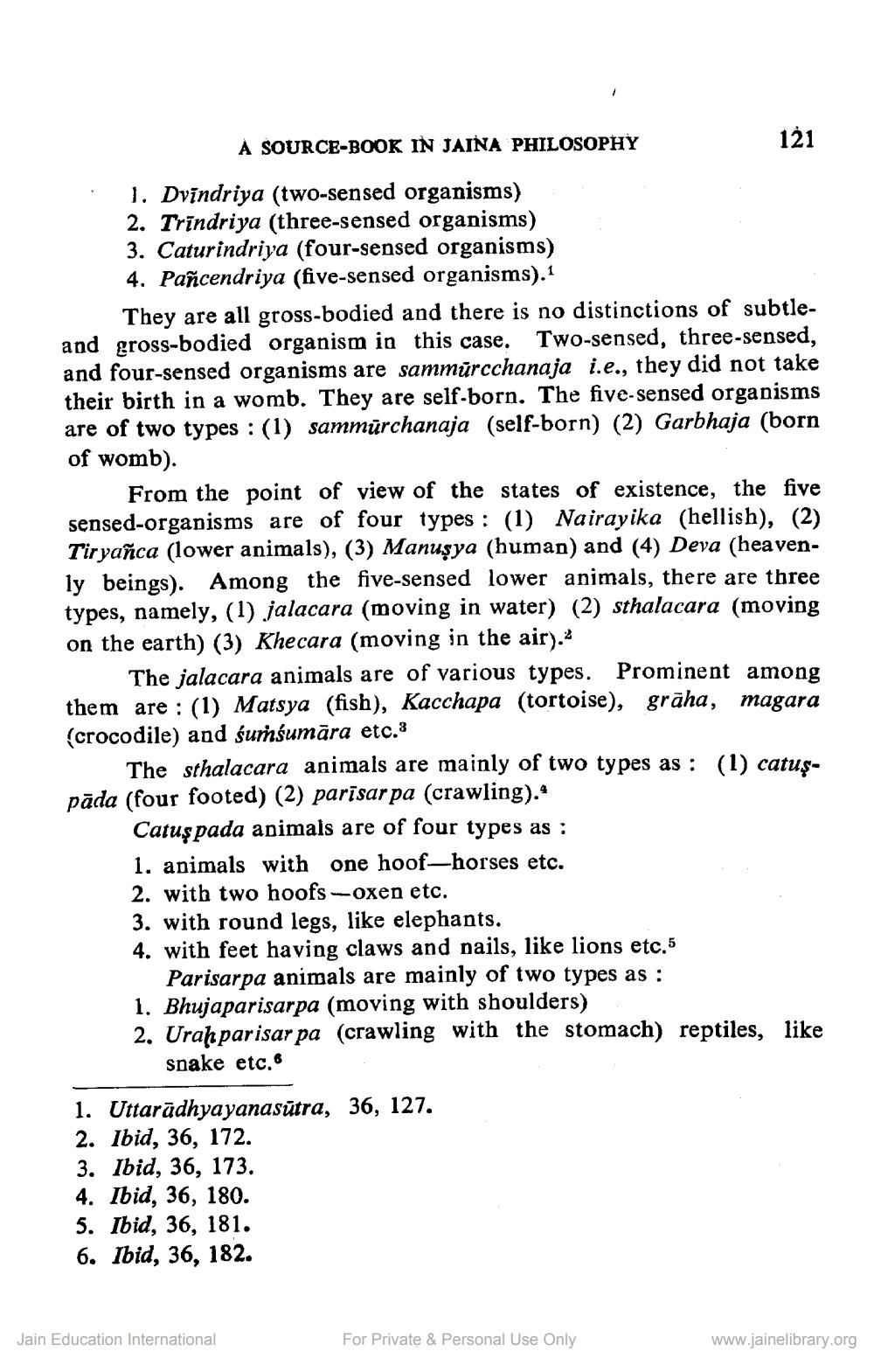________________
A SOURCE-BOOK IN JAINA PHILOSOPHY
121
1. Dvīndriya (two-sensed organisms) 2. Trīndriya (three-sensed organisms) 3. Caturindriya (four-sensed organisms) 4. Pañcendriya (five-sensed organisms).1
They are all gross-bodied and there is no distinctions of subtleand gross-bodied organism in this case. Two-sensed, three-sensed, and four-sensed organisms are sammürcchanaja i.e., they did not take their birth in a womb. They are self-born. The five-sensed organisms are of two types : (1) sammūrchanaja (self-born) (2) Garbhaja (born of womb).
From the point of view of the states of existence, the five sensed-organisms are of four types : (1) Nairayika (hellish), (2) Tiryanca (lower animals), (3) Manuşya (human) and (4) Deva (heavenly beings). Among the five-sensed lower animals, there are three types, namely, (1) jalacara (moving in water) (2) sthalacara (moving on the earth) (3) Khecara (moving in the air).*
The jalacara animals are of various types. Prominent among them are : (1) Matsya (fish), Kacchapa (tortoise), grāha, magara (crocodile) and surśumāra etc.3
The sthalacara animals are mainly of two types as : (1) catuspāda (four footed) (2) parīsar pa (crawling).*
Catuşpada animals are of four types as : 1. animals with one hoof-horses etc. 2. with two hoofs--oxen etc. 3. with round legs, like elephants. 4. with feet having claws and nails, like lions etc.5
Parisarpa animals are mainly of two types as : 1. Bhujaparisarpa (moving with shoulders) 2. Urah parisar pa (crawling with the stomach) reptiles, like
snake etc. 1. Uttarādhyayanasūtra, 36, 127. 2. Ibid, 36, 172. 3. Ibid, 36, 173. 4. Ibid, 36, 180. 5. Ibid, 36, 181. 6. Ibid, 36, 182.
Jain Education International
For Private & Personal Use Only
www.jainelibrary.org




